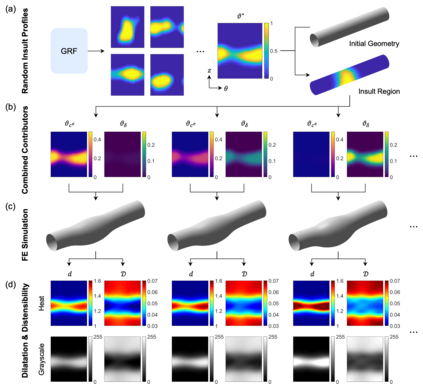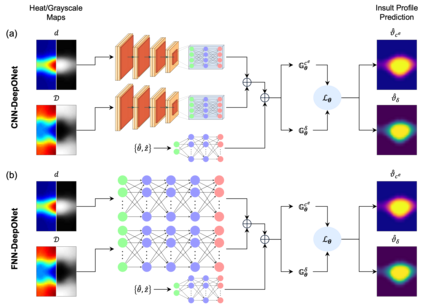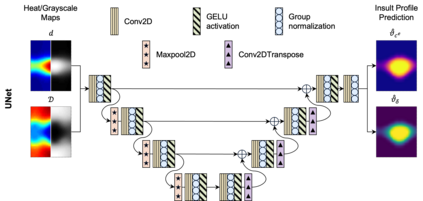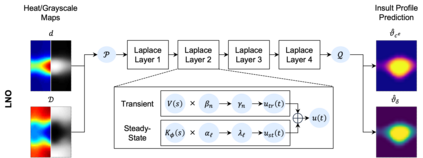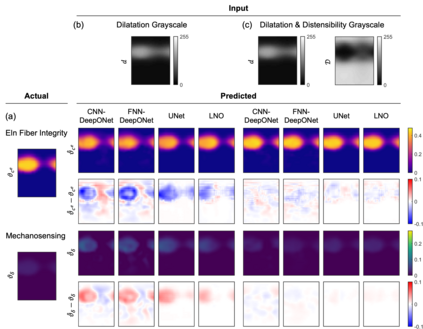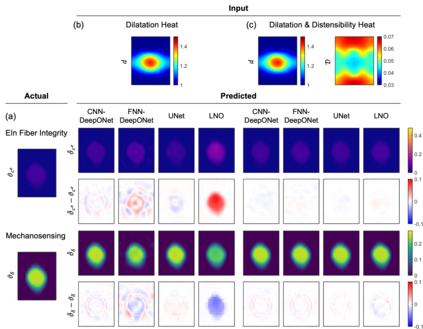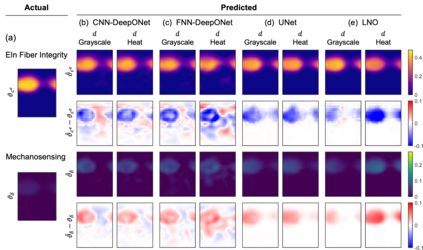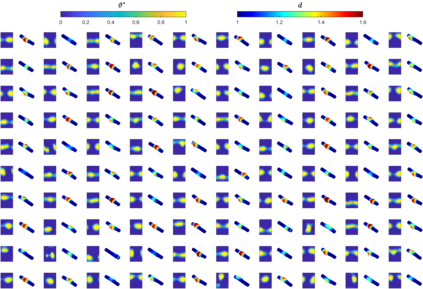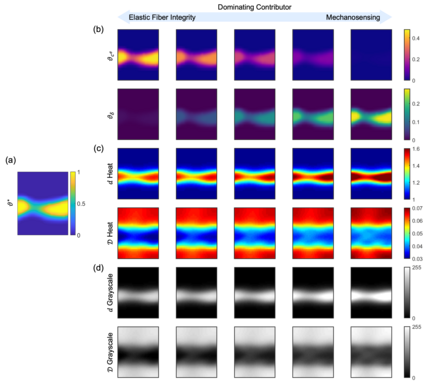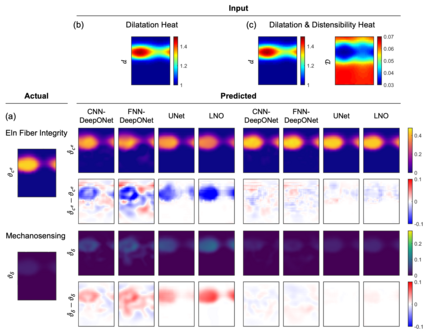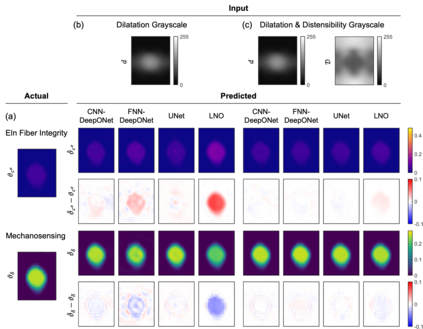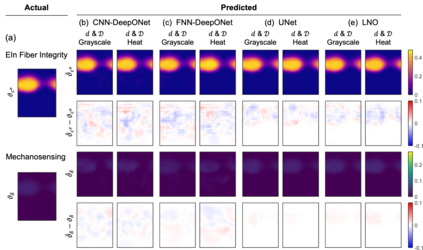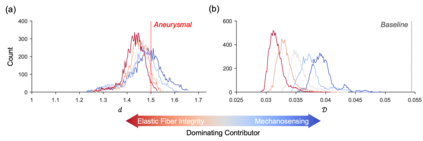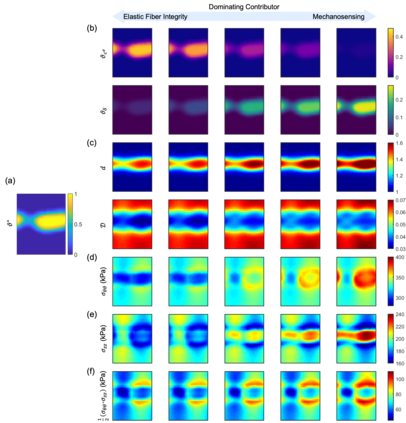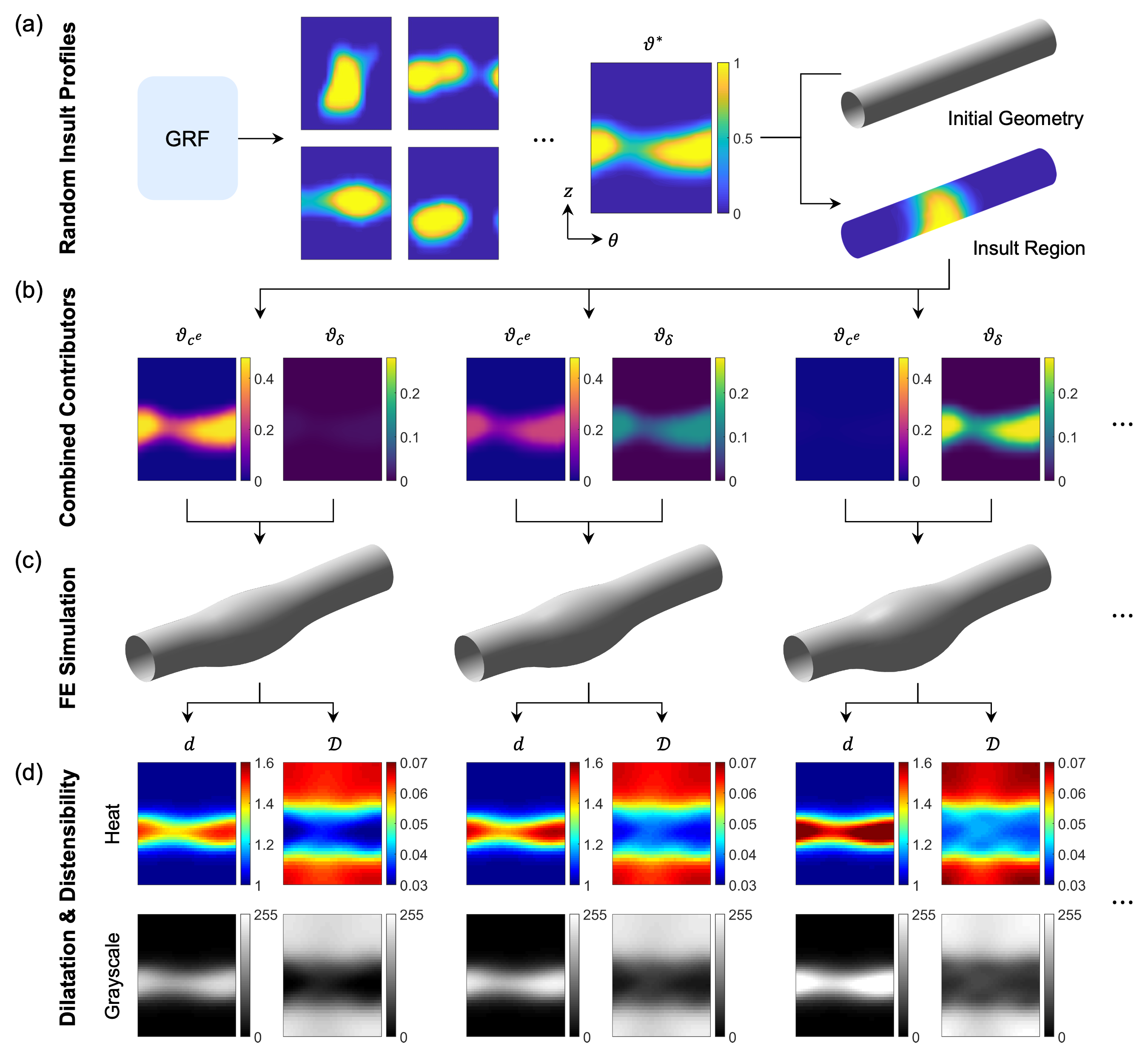Thoracic aortic aneurysms (TAAs) arise from diverse mechanical and mechanobiological disruptions to the aortic wall that increase the risk of dissection or rupture. Evidence links TAA development to dysfunctions in the aortic mechanotransduction axis, including loss of elastic fiber integrity and cell-matrix connections. Because distinct insults create different mechanical vulnerabilities, there is a critical need to identify interacting factors that drive progression. Here, we use a finite element framework to generate synthetic TAAs from hundreds of heterogeneous insults spanning varying degrees of elastic fiber damage and impaired mechanosensing. From these simulations, we construct spatial maps of localized dilatation and distensibility to train neural networks that predict the initiating combined insult. We compare several architectures (Deep Operator Networks, UNets, and Laplace Neural Operators) and multiple input data formats to define a standard for future subject-specific modeling. We also quantify predictive performance when networks are trained using only geometric data (dilatation) versus both geometric and mechanical data (dilatation plus distensibility). Across all networks, prediction errors are significantly higher when trained on dilatation alone, underscoring the added value of distensibility information. Among the tested models, UNet consistently provides the highest accuracy across all data formats. These findings highlight the importance of acquiring full-field measurements of both dilatation and distensibility in TAA assessment to reveal the mechanobiological drivers of disease and support the development of personalized treatment strategies.
翻译:暂无翻译

